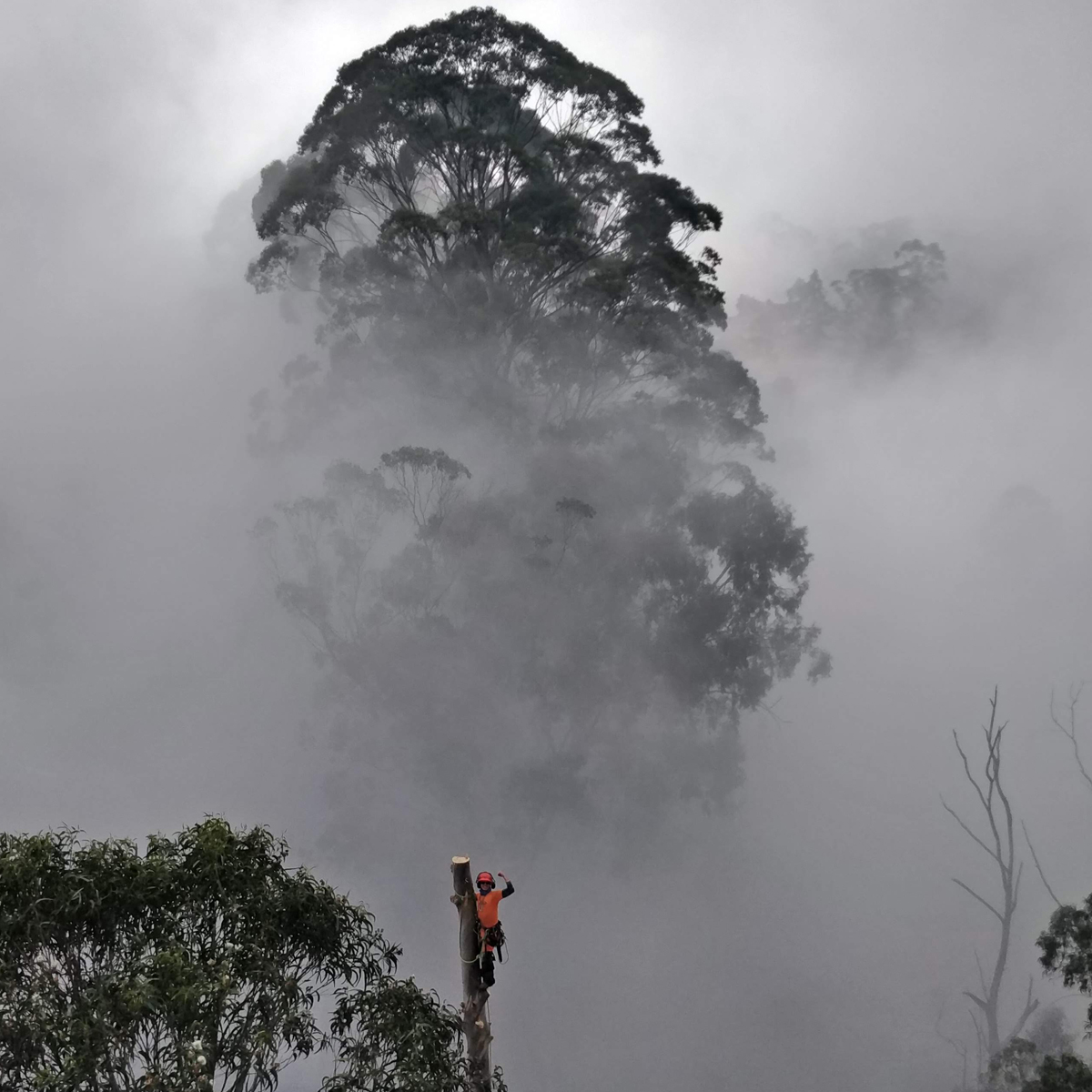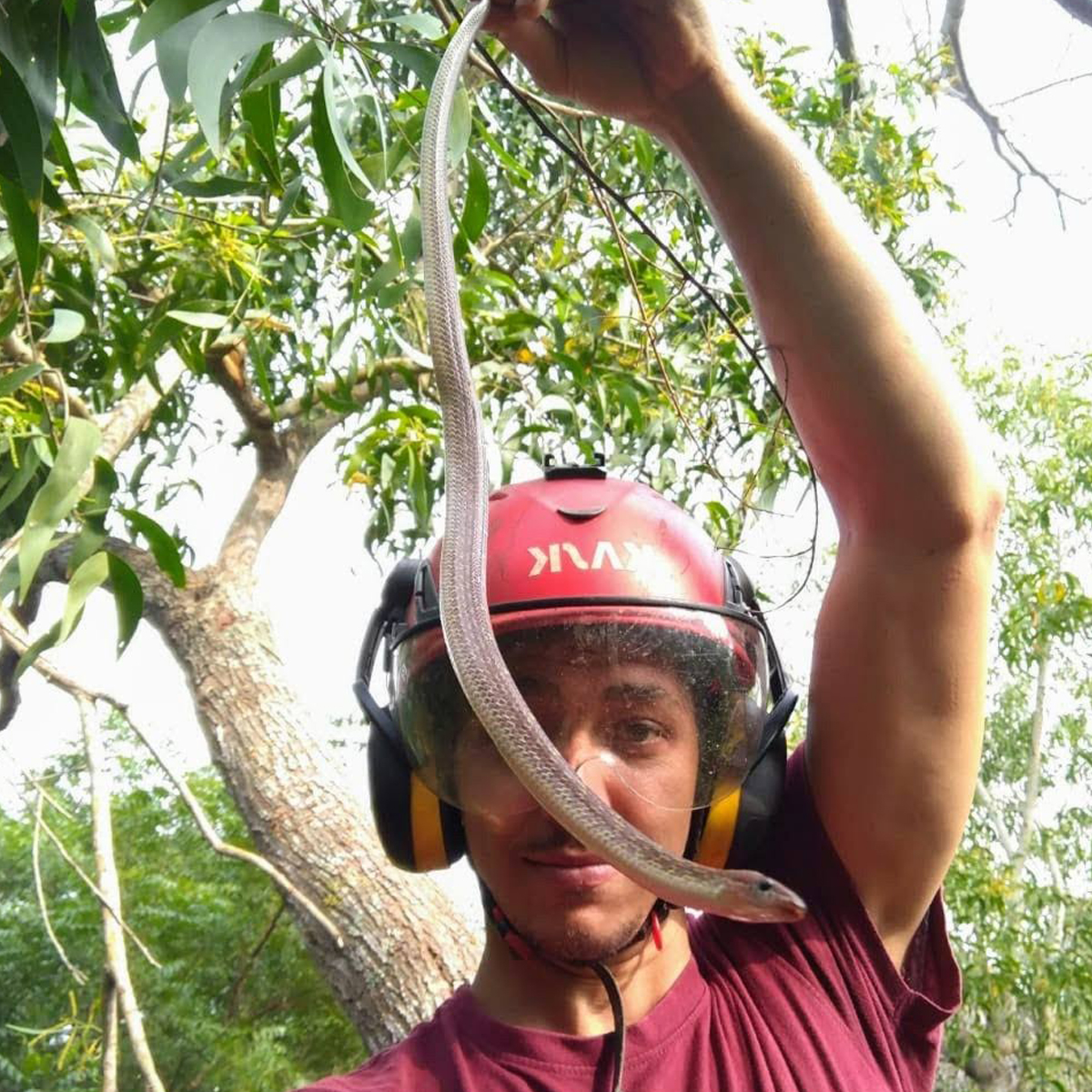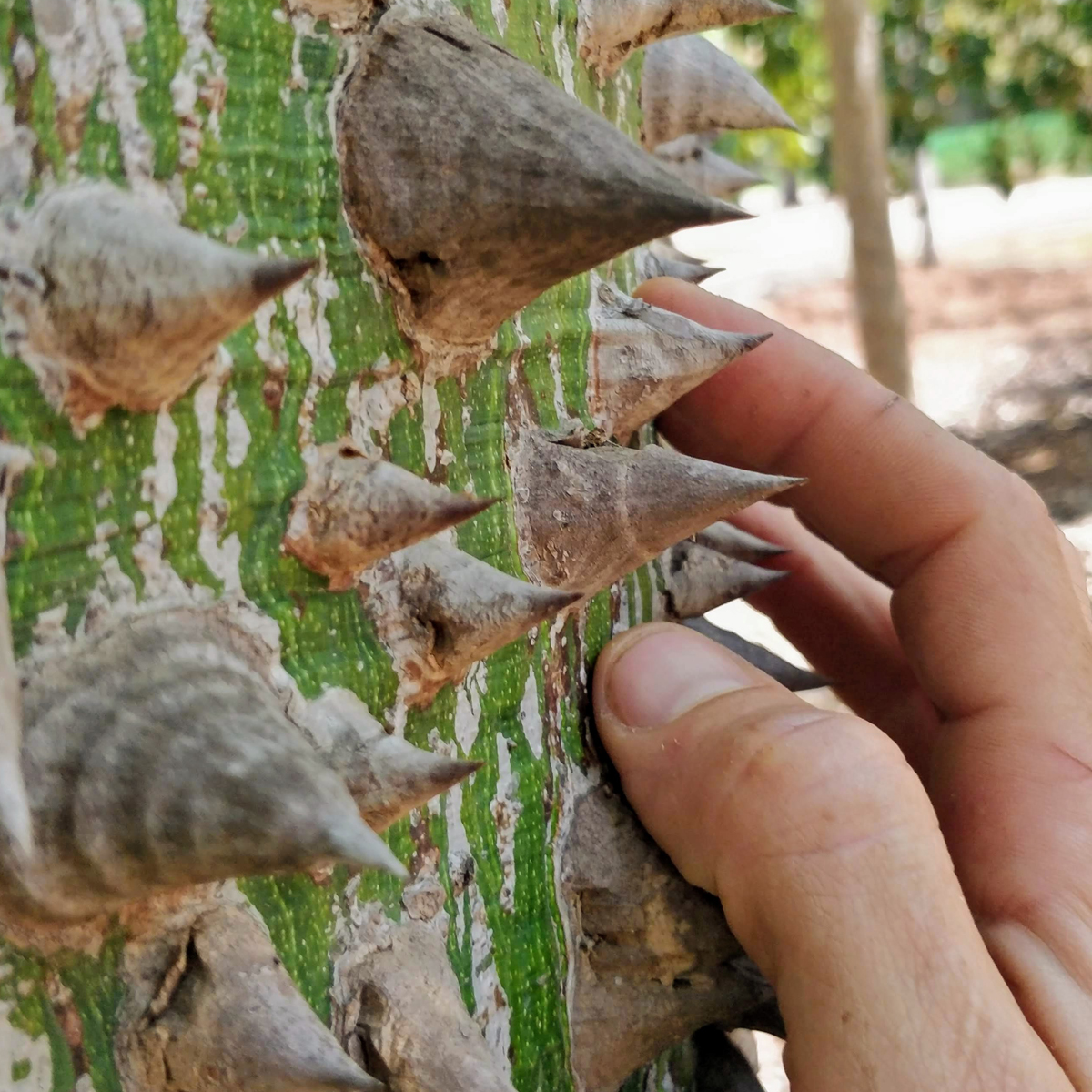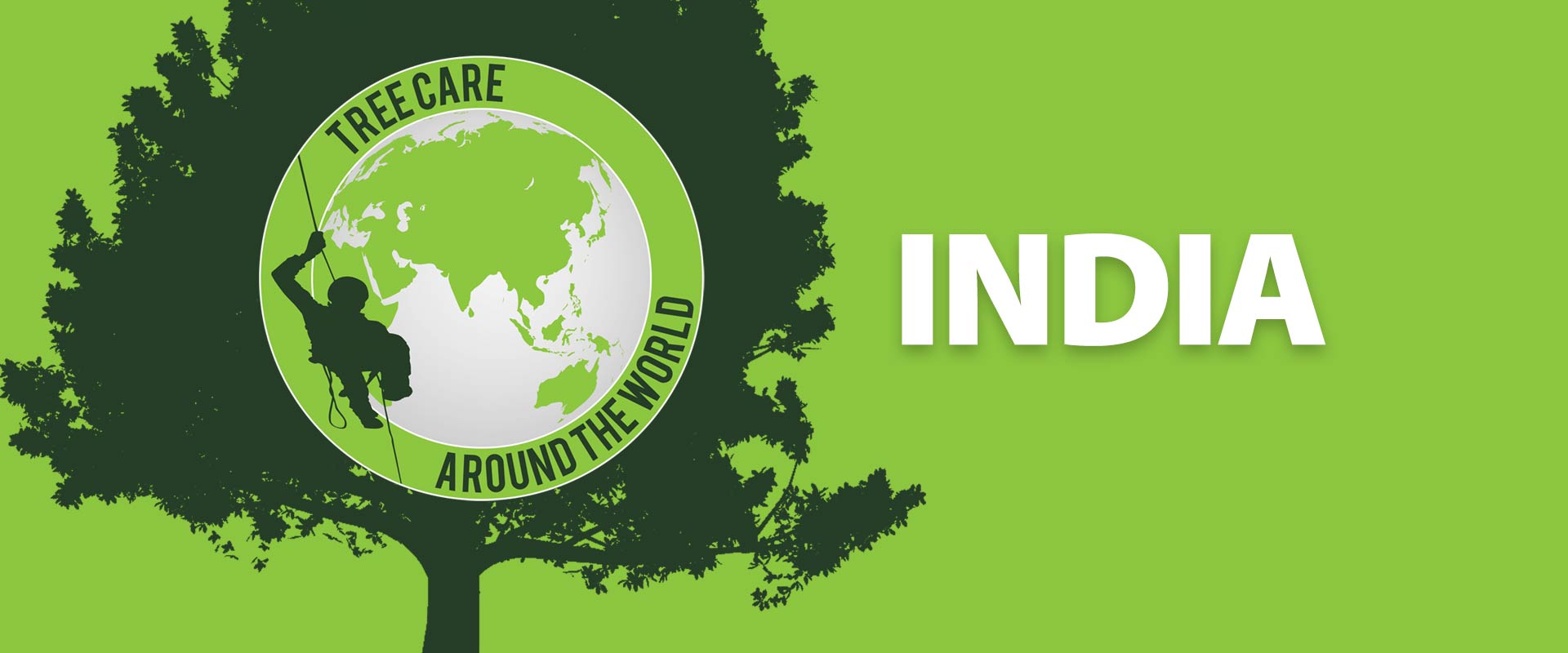There are currently 3.04 trillion trees and 7.2 billion people on Earth. Theoretically, this means that each person would have to take care of 422 trees, assuming they were all arborists. But, who takes care of trees in other countries? How do other arborists work in other parts of the world? What rules and regulations do they have to follow? What dangerous animals and plants are there? We aim to answer all these questions in our new series, “Arboriculture around the World.”

Our first of twelve destinations to answer these questions is the home of the Bengal tiger, the Taj Mahal and Mowgli from The Jungle Book: the Republic of India. Independent since 1947, the country, which is not only nine times larger than Germany but also surrounded by three oceans and the Himalayan Mountains, serves as home to more than 1.4 billion people. Its citizens share two nationwide official languages (English and Hindi) and 21 other official languages at the regional level. One of those people is an arborist: Anadi Skoles. He works at TreeCare India, one of only four tree care companies in the country.
We were fortunate that Anadi found the time to answer our questions during an interview, giving us the opportunity to learn more about the tree care scene in India.
Anadi, where did you grow up and where do you work now?
I was born in India and grew up there, until recently I’ve worked as an arborist for the last 12 years in India.
There are different ways to become an arborist in Germany. How does the training to become an arborist work in your country? Is a certain level of schooling required here, or a degree?
In India, there are very few to no opportunities to become an arborist. While there are a large number of tree climbers, they all climb with no or minimal safety equipment. At TreeCare India, we offer some training on the technical aspects of arboriculture, but the only way to become a certified arborist is to study online and then take the ISA written exam at a Pearson center.
How long have you been doing tree care? How did you get into arboriculture? And have you always wanted to be an arborist?
I have been working as an arborist for 12 years. My father ran a coastal reforestation project on about 10 acres, and since I grew up planting and pruning trees, I’ve always had a penchant for climbing trees, but it wasn’t until I’d been working as an arborist for about a year that I started teaching myself what proper arboricultural practices were.
Our followers on Facebook and Instagram are very clearly divided. 90% are male, 10% are female. What do you think is the distribution between male and female arborists in your country?
I would confidently say it’s about 99.999% male dominated in India. Hopefully it will change.
How would you describe the arboriculture community in your country? How are you connected to the international community?
There are now slowly about 4 professional tree care companies in India, so our community is tiny, but we work together. However, I feel that I am much more connected to the international arboriculture industry and that TreeCare India, which my friends and I run, is well connected and supported as the first arboriculture company to advocate for good practices in India. I am very grateful to work in an industry that is so supportive.
Could you imagine working abroad? If yes, where? If no, why not? Or do you already have experience in this field?
I have worked in Australia and in some countries in Europe, such as Italy, Germany and Austria. I would also like to travel to Canada and the USA. Slowly but surely this will happen.
Let’s move on to the technical questions.
What equipment do you use? Do you import equipment or are there also local manufacturers?
My go to equipment is squire and Rope Runner for srt work and ascent. ZigZag and Komora for drt, tree motion harness Silky Sugoi handsaw, Protos helmet, Husqvarna chainsaws, CT Footascender. All the equipment except the chainsaws is imported as we do not have any dealers for tree equipment in India. There are some rope manufacturers, but not specifically for tree climbing
What kind of regulations – for equipment – excist in your country? How strictly are these followed and controlled?
There are some regulations for equipment manufacturers, but the standards are very low. The products manufactured for tree work in India are substandard.
Do you climb SRT or DRT? Or both in combination?
Both. It depends a lot on the tree. I believe that you should never commit to one method.
What is your preferred rope device or friction hitch cord?
The rope runner
What is your favorite tool or product?
The TreeMotion Evo.
The USA have redwood trees, Japan the cherry blossoms. Which tree is special to your country? & What is your favorite tree?
In India, the Banyan bengalensis is one of our amazing trees. But we live in the tropics with thousands of species and so many amazing trees that it’s hard to say which one is famous or my favorite. But most of the banyan trees are amazing.

Canada has bears, India has tigers, Germany has the oak processionary moth and Australia has many poisonous and dangerous animals. What is the most dangerous animal in the tree or in the environment that could get in your way?
The most dangerous animal in an Indian tree are rock bees (Himalayan Honey Bees), which can kill and are easily disturbed. There are also snakes and processionary caterpillars.
But not only animals can be dangerous. What are the most dangerous plants you can encounter?

We have a variety of bombax trees that are covered in thorns and spikes. They are quite hazardous.
In Germany, some species of flora and fauna are protected. Do you also have species to watch out for or do you protect things in your own way?
In India, there are a large number of protected trees and many species that are threatened with extinction, but there is little to no action to conserve these species. We try to protect certain tree species as best we can.
In Germany, the peak season for tree care usually starts in April. In which month or at which time of year is the peak season for tree care in your country?
From August to March we have the most work, in November there is a month of heavy rain when we work very little.
Depending on the country, there are different seasons or dry and rainy seasons. What was the most extreme weather you worked in? Heat? Ice? Rain? Storm?
I would say the most extreme was 42° C at 98% humidity. Your body loses water and minerals faster than you can rehydrate. After a day of work, it takes two days to recover from dehydration. But there are tricks to survive and hang in there.
In some countries it is not easy to call an ambulance quickly. How quickly would an emergency rescue service reach you if you needed one?
It depends on the location, but on average I would say 45 minutes.
What role do local governments and communities play in promoting and supporting tree care in your home country?
The government none, the local community supports much of it.
What are the future prospects for tree care in your home country and what can be done to maintain and promote the health and beauty of trees?
I believe that tree care has a great future in India, but change is slow. Only if people realize that trees are an asset and not a luxury, then there will be a change in the industry. This will happen when the population become promoters and city governments are pressured to take care of their green spaces.
And the last question. What was your most spectacular or beautiful workday that you will never forget?
My most spectacular day at work. There were many and they were all marked by a new challenge. But I would say the best was removing a 45-meter eucalyptus tree with the team on a mountainside as the clouds rolled in from the valley. My colleague Jonas climbed the tree next to me, and we were so excited and focused that we brought down massive branches and the clouds obscured our view. The communication and teamwork worked great. It was a site that each of us remembers. All new recruits are inspired by the videos and pictures. Moments of intense challenge force one to become a better and safer climber.
Anadi, thank you again for the great interview. It’s incredible how different the scene already is in a few thousand kilometers away. Stay healthy and continue to have fun at work. If you want to know more about Anadi and the tree care scene in India, feel free to stop by at his Instagram channel.
Our next destination for the month of February is the United States of America and the state of Ohio. Until then, climb up safe!

